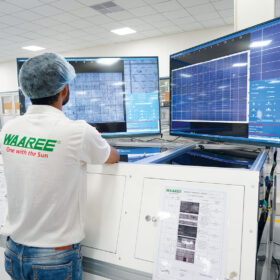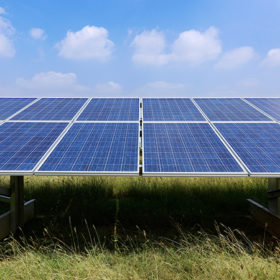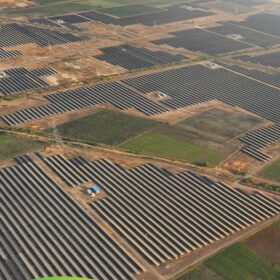India’s electric vehicle (EV) revolution is no longer a question of if—it’s a matter of how fast. While charging infrastructure, policy incentives, and public awareness continue to evolve, a quieter but equally powerful shift is happening under the hood: the rapid emergence of Cell-to-Pack (CTP) battery technology. More than just a design tweak, CTP is rewriting the rulebook on how EV batteries are built, promising better range, lighter weight, and lower costs—all without compromising safety.
What is cell-to-pack (CTP) technology?
Traditional lithium-ion battery packs follow a layered structure—cells are grouped into modules, which are then combined to form the complete pack. However, CTP simplifies the battery architecture by placing cells directly into the pack, bypassing the conventional module stage. This simplified architecture cuts down on redundant components and materials, leading to improved energy density and overall efficiency.
But CTP’s value goes beyond compact design—it enables smarter engineering. By removing the module stage, manufacturers benefit from better space utilisation, reduced production costs, and more effective thermal control.
A rapidly expanding global market
CTP is not an isolated development. It is part of a broader boom in battery technology, driven by the rising demand for electric vehicles (EVs) and renewable energy storage. The global cell-to-pack (CTP) battery market is projected to touch $18 billion in 2024. As technology matures and adoption expands, particularly in Asia-Pacific markets, it is expected to grow at a compound annual growth rate (CAGR) of 15%, potentially reaching a staggering $66 billion by 2034.
The lithium-ion battery industry is on an accelerated growth trajectory, with its market size expected to expand from $50 billion in 2024 to $169 billion by 2034, growing at a CAGR of 14%. This upward trend suggests that technologies such as Cell-to-Pack (CTP) are set to become standard in the industry rather than high-end exceptions.
Why CTP matters for two- and three-wheelers in India
India is home to one of the largest markets for two- and three-wheelers globally, and these segments play a crucial role in urban mobility, last-mile delivery, and short-distance logistics. However, current electric variants often face challenges related to weight, range, and cost—all of which CTP technology addresses directly.
Improved range and efficiency
CTP technology boosts the energy density of battery packs, enabling longer driving ranges without adding bulk or weight. This is especially important for two-wheelers, e-rickshaws, and delivery three-wheelers, where even small weight increases can impact efficiency and performance.
Lower manufacturing costs
CTP architecture simplifies battery production by removing the module assembly stage, reducing the number of parts, connectors, and labour steps involved. This structural efficiency can lead to a lower cost per kWh at the battery pack level.
While battery costs currently make up a significant share of an EV’s total cost—estimates range between 35% to 40%, depending on vehicle type and configuration—CTP’s material savings and simpler assembly are helping manufacturers gradually bring down overall EV prices. For price-sensitive segments such as two-wheelers and e-rickshaws, this opens up room for OEMs to improve margins or offer more competitive pricing.
Better thermal management
CTP systems generally offer improved thermal management, helping to minimise the risk of overheating—an important advantage in India’s high-temperature conditions. Better heat dissipation also supports quicker charging, which is a key benefit for fleet operators looking to reduce downtime.
Scalability for OEMs
For Indian OEMs (original equipment manufacturers), adopting CTP tech offers a modular design approach that’s easy to scale across different vehicle models. A single CTP battery platform could potentially power everything from low-speed scooters to cargo three-wheelers, streamlining R&D and supply chains.
Challenges and the road ahead
While CTP technology offers clear benefits, its widespread adoption in India is not without challenges. The domestic EV ecosystem is still maturing, with a strong dependence on imported battery cells. Shifting to CTP will demand significant efforts in research and development, revamped manufacturing capabilities, and upskilling of the workforce. Moreover, India lacks a robust testing infrastructure suited to its varied climate and road conditions. To fast-track CTP deployment, coordinated efforts between industry stakeholders and policymakers are essential, especially in establishing certification protocols and supportive policy frameworks.
Conclusion
CTP represents more than a marginal upgrade—it marks a significant technological shift. For India’s growing electric two- and three-wheeler segment, it offers a pathway to energy solutions that are cost-effective, high-performing, and easily scalable. With global EV and battery markets rapidly expanding, India’s domestic EV industry has a pivotal moment to adopt CTP and help shape the next wave of clean and accessible mobility.
The views and opinions expressed in this article are the author’s own, and do not necessarily reflect those held by pv magazine.
This content is protected by copyright and may not be reused. If you want to cooperate with us and would like to reuse some of our content, please contact: editors@pv-magazine.com.








By submitting this form you agree to pv magazine using your data for the purposes of publishing your comment.
Your personal data will only be disclosed or otherwise transmitted to third parties for the purposes of spam filtering or if this is necessary for technical maintenance of the website. Any other transfer to third parties will not take place unless this is justified on the basis of applicable data protection regulations or if pv magazine is legally obliged to do so.
You may revoke this consent at any time with effect for the future, in which case your personal data will be deleted immediately. Otherwise, your data will be deleted if pv magazine has processed your request or the purpose of data storage is fulfilled.
Further information on data privacy can be found in our Data Protection Policy.